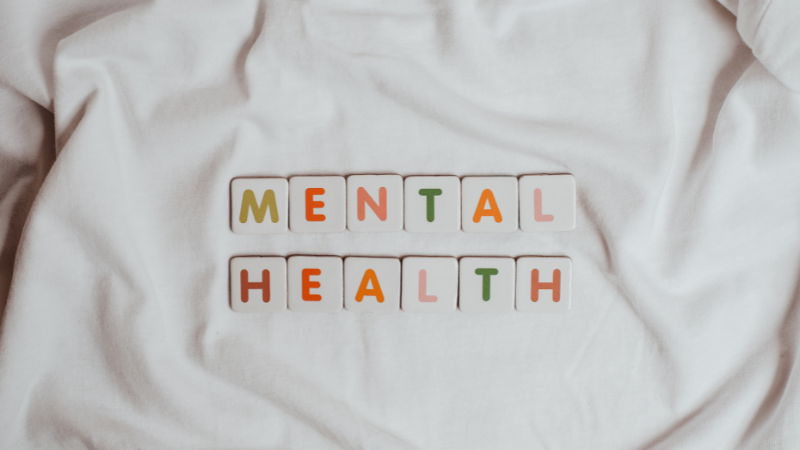What Are Examples of Physical Wellness? Prepare to Be Inspired
What are Examples of Physical Wellness? Discover cardiovascular exercises like running and swimming, build strength with bodyweight exercises, and improve flexibility through yoga. Nutrition, rest, and mental health also play key roles in achieving overall well-being. Find personalized goals and overcome barriers to inspire a healthier lifestyle.

Introduction
Hey there! As a fitness instructor who’s all about physical wellness, I’m excited to take you on a journey through the world of staying fit and healthy. Physical wellness isn’t just about looking good; it’s about feeling fantastic, full of energy, and ready to conquer whatever life throws at you. In this article, we’ll explore the different components of physical wellness, how they contribute to your overall well-being, and some fun personal anecdotes along the way.
So, buckle up, and let’s get moving! Let’s answer the question What are Examples of Physical Wellness?
Components of Physical Wellness
- Cardiovascular Endurance
Cardiovascular endurance is the name of the game when it comes to keeping your heart happy and healthy. I often tell my clients that it’s like giving your heart a daily dose of love! Engaging in regular cardiovascular exercises not only strengthens your heart but also improves blood circulation, lowers blood pressure, and boosts your lung capacity. The beauty of cardiovascular activities lies in their versatility. Whether you prefer running on scenic trails, cycling through the neighborhood, or swimming laps in the pool, there’s an option for everyone. Plus, they’re a great way to clear your mind and feel that endorphin rush!
I recall one of my clients, Sarah, who was a busy working mom with little time to spare for exercise. She was initially skeptical about starting a fitness routine, but I convinced her to try brisk walking during her lunch breaks. After a few weeks, she was amazed at how much better she felt both physically and mentally. The simple act of walking had transformed her daily routine and added years to her life.
- Muscular Strength and Endurance
Building muscular strength and endurance goes beyond just lifting weights at the gym. Sure, resistance training is essential, but bodyweight exercises can be just as effective. One of my favorite examples of this is the humble push-up. It not only works your chest, shoulders, and arms but also engages your core and improves overall stability. The best part? You can do push-ups anywhere and anytime!
Adding resistance training to your fitness routine has numerous benefits. Not only does it increase muscle strength and endurance, but it also boosts your metabolism, leading to better calorie burning even at rest. This can be particularly helpful for those looking to shed some pounds or maintain a healthy weight. Remember, you don’t need fancy equipment or hours in the gym to get started. Start small and gradually increase the intensity as you become more comfortable.
- Flexibility and Mobility
Being flexible and mobile is crucial for maintaining good posture and preventing injuries. As we age, our joints tend to become stiffer, and muscles lose their elasticity. Regular stretching and mobility exercises can help combat these effects and keep you moving with ease.
Yoga is a fantastic practice that not only improves flexibility but also enhances balance and mental focus. It allows you to connect with your body and breathe through challenging poses, fostering a sense of calm and relaxation. Dynamic stretches, on the other hand, are ideal for warming up before workouts and getting your body ready for action.
One of my clients, Mark, was an avid runner who experienced occasional knee pain. Through a combination of dynamic warm-ups, yoga sessions, and post-run stretches, we significantly reduced his knee discomfort, allowing him to continue pursuing his passion for running pain-free.
- Body Composition
When we talk about body composition, we’re referring to the ratio of fat, muscle, bone, and other tissues in your body. Achieving a healthy body composition isn’t about fitting into a certain dress size; it’s about having the right balance for optimal health. While it’s essential to exercise, nutrition also plays a significant role in shaping your body composition.
Maintaining a healthy body composition involves both fueling your body with the right nutrients and engaging in regular physical activity. Nutrition is the foundation of your fitness journey, and it’s essential to focus on nourishing your body with a balanced diet. Emphasize whole foods such as lean proteins, colorful fruits and veggies, whole grains, and healthy fats while minimizing processed and sugary foods.
Finding the right balance of nutrients and staying consistent is the key to success. It’s not about depriving yourself but rather embracing a lifestyle that supports your fitness goals. Remember, every meal is an opportunity to nourish your body and make progress towards a healthier you.
The Role of Nutrition in Physical Wellness

You know what they say: you can’t out-train a bad diet! Nutrition is the fuel that powers your workouts and everyday activities. Eating a variety of nutrient-rich foods is vital for maintaining physical wellness. Foods like lean proteins, colorful fruits and veggies, whole grains, and healthy fats are all part of the winning formula.
A balanced diet provides your body with the necessary nutrients to repair and rebuild tissues after exercise. For example, proteins are essential for muscle repair and growth, while carbohydrates replenish your glycogen stores and provide energy for workouts.
Incorporating smart eating habits into your lifestyle can significantly impact your fitness progress. Meal planning and preparation can make it easier to stick to a nutritious diet, even when life gets busy. Remember, it’s okay to indulge in your favorite treats occasionally; it’s all about finding that healthy balance.
Hydration is another critical aspect of nutrition that’s often overlooked. Drinking enough water keeps your body hydrated, supports digestion, and helps transport nutrients to your muscles. I always carry a reusable water bottle with me, and I encourage my clients to do the same. Remember to listen to your body’s thirst cues and stay hydrated throughout the day, especially during and after workouts.
The Importance of Rest and Recovery
Here’s a secret I share with all my clients: rest is just as important as exercise. Your body needs time to recover and repair after intense workouts. Adequate sleep is crucial for muscle recovery and overall well-being. A well-rested body is a happy body! I remember a time when I pushed myself too hard, neglecting rest days, and ended up feeling exhausted and burnt out. Lesson learned!
During sleep, your body goes into repair mode, building and repairing tissues, and balancing hormone levels. Aim for seven to nine hours of quality sleep each night to support your physical wellness journey. Establishing a consistent sleep routine, such as going to bed and waking up at the same time every day, can improve sleep quality and leave you feeling refreshed.
Recovery techniques, like active recovery and foam rolling, can also work wonders for your body. Taking a walk or doing gentle stretching on your rest days can help improve blood flow and alleviate muscle soreness. And let me tell you, foam rolling might be a bit uncomfortable at first, but the relief you feel afterward is worth it!
Mental Health and its Connection to Physical Wellness
Physical wellness and mental health go hand in hand. Your mind and body are deeply connected, and your mental state can greatly influence your physical performance. When I was going through a particularly stressful time in my life, I noticed that my workouts suffered. I lacked motivation and couldn’t push myself as hard as usual. It was a wake-up call for me to prioritize self-care and find ways to manage stress.
Stress can have physical effects on the body, such as increased muscle tension and elevated heart rate. Chronic stress can also lead to emotional eating or other unhealthy coping mechanisms, which can hinder your progress towards physical wellness.
Practicing mindfulness, meditation, or even just taking a few minutes each day to breathe deeply can do wonders for reducing stress and improving focus. Mindfulness practices encourage you to be fully present in the moment, letting go of worries about the past or future. I often recommend meditation apps or guided sessions to my clients who are new to mindfulness. One of my clients, Jane, was initially skeptical about meditation but decided to give it a try. She found that just a few minutes of meditation each day helped her manage stress and stay focused on her fitness goals.
Another way to promote mental wellness is through social connections. Engaging in physical activities with friends or joining group fitness classes not only boosts your motivation but also fosters a sense of community. Social interactions release feel-good chemicals like oxytocin, which can enhance your overall mood and sense of well-being.
Strategies for Balancing Mental and Physical Well-being

Balancing mental and physical well-being can be a delicate dance, especially when life gets busy. Here are some strategies to help you stay on track:
- Prioritize Self-Care: Make time for activities that bring you joy and relaxation. Whether it’s reading a book, taking a bath, or spending time with loved ones, self-care is essential for recharging your mind and body.
- Manage Stress: Identify your stressors and find healthy ways to cope with them. Exercise, meditation, and spending time in nature are great stress-busters.
- Set Realistic Goals: Avoid overwhelming yourself with unrealistic expectations. Break down your fitness goals into smaller, achievable steps. Celebrate your progress along the way!
- Practice Gratitude: Cultivate an attitude of gratitude by acknowledging and appreciating the positive aspects of your life. Gratitude can help shift your focus away from negative thoughts and foster a more positive outlook.
- Seek Support: Don’t be afraid to reach out to friends, family, or a professional if you’re struggling. Sometimes, talking about your challenges can provide clarity and solutions.
Personalizing Physical Wellness Goals
One size does not fit all when it comes to physical wellness. Each person has different needs, abilities, and goals. It’s essential to assess where you are starting from and set realistic, achievable fitness goals. Taking a holistic approach to physical wellness means considering factors such as age, fitness level, medical history, and personal preferences.
If you’re new to exercise, start with activities that you enjoy and that align with your current fitness level. For instance, if you prefer low-impact exercises, try swimming or cycling. If you enjoy being outdoors, hiking or nature walks can be a perfect fit.
On the other hand, if you’ve been exercising regularly and want to challenge yourself further, consider adding new activities or increasing the intensity of your workouts. Cross-training, which involves incorporating different types of exercises into your routine, can prevent boredom and help you achieve well-rounded physical fitness.
One of my clients, Mike, wanted to improve his overall strength and flexibility. We designed a personalized program that combined resistance training, yoga, and occasional outdoor activities. By tailoring the plan to his specific needs and preferences, Mike was able to stay committed to his fitness journey and achieve remarkable results.
Overcoming Barriers to Physical Wellness
As a fitness instructor, I’ve encountered my fair share of barriers that can derail progress. Common challenges include lack of time, motivation, or access to resources. But fear not! There are practical solutions for every hurdle.
Finding pockets of time for exercise throughout your day, like taking the stairs instead of the elevator or doing quick bodyweight exercises during TV commercial breaks, can add up and make a difference.
When it comes to motivation, it’s essential to find an exercise routine that you genuinely enjoy. If you dread going to the gym, try exploring other activities that excite you, such as dancing, rock climbing, or playing a team sport. You’re more likely to stick with a fitness routine that brings you joy!
For those with limited access to gym facilities, home workouts or online fitness classes can be great alternatives. The internet is a treasure trove of free workout videos that cater to various fitness levels and interests.
Additionally, if you find yourself lacking accountability, consider partnering with a workout buddy or hiring a personal trainer. Having someone to exercise with or guide you through your fitness journey can make a significant difference in staying consistent and motivated.
Inspiring Physical Wellness in Others
One of the most fulfilling aspects of my job is inspiring others to embrace physical wellness. As a fitness instructor, I get to be a part of their journey, cheering them on as they reach new milestones. Creating a supportive environment for physical wellness is essential, whether it’s through group fitness classes, virtual communities, or just a friendly gym buddy.
Sharing your experiences and challenges with others can also be inspiring. It lets people know that they are not alone and that everyone faces obstacles along their wellness journey. Empower others to take small steps towards their goals and remind them that every effort counts.
What are Examples of Physical Wellness Conclusion
Phew! We’ve covered a lot in this article, and I hope you’re feeling motivated to embark on your own journey toward physical wellness. Remember, it’s about finding activities you enjoy, nourishing your body with nutritious foods, and taking time to rest and recover. And hey, don’t forget to smile along the way – fitness is meant to be fun!
So, lace up those sneakers, grab that water bottle, and let’s get moving together. Your path to physical wellness starts today! Embrace the journey, stay committed to your goals, and remember that progress is a marathon, not a sprint. You’ve got this!
Frequently Asked Questions (FAQ’s)
FAQ 1: What are some examples exercises for physical wellness?
A: Examples of cardiovascular exercises include running, cycling, swimming, and brisk walking. These activities strengthen the heart, improve lung capacity, and boost overall cardiovascular health.
FAQ 2: How can I improve my muscular strength and endurance for physical wellness?
A: You can enhance muscular strength and endurance through resistance training, such as weightlifting and bodyweight exercises like push-ups and squats. Consistent training leads to increased muscle strength and improved physical performance.
FAQ 3: What role does nutrition play in physical wellness?
A: Nutrition is crucial for physical wellness. A balanced diet with nutrient-rich foods, including lean proteins, fruits, vegetables, and healthy fats, supports your fitness goals and overall well-being. Hydration is also vital for optimal physical performance.
FAQ 4: How can I balance mental well-being with physical wellness?
A: Mental well-being is intertwined with physical wellness. Practicing mindfulness, meditation, and stress management techniques can help reduce stress levels, enhance focus, and positively impact your physical performance. Social connections and self-care are also vital for maintaining a healthy mind-body balance.
If you liked this post on What are Examples of Physical Wellness, here are some related Physical Wellness articles:
Physical Wellness Gear Guide: Must Have Items For Max Results
10 Essential Physical Wellness Tips for a Healthier You!
Take the 7 Day Physical Wellness Challenge Today
Physical Wellness Secrets Unveiled: Master Your Mind and Body!
From Couch to Fit: A Beginner’s Guide to Physical Wellness
Unlock Your Potential: Transform Your Body with Physical Wellness


